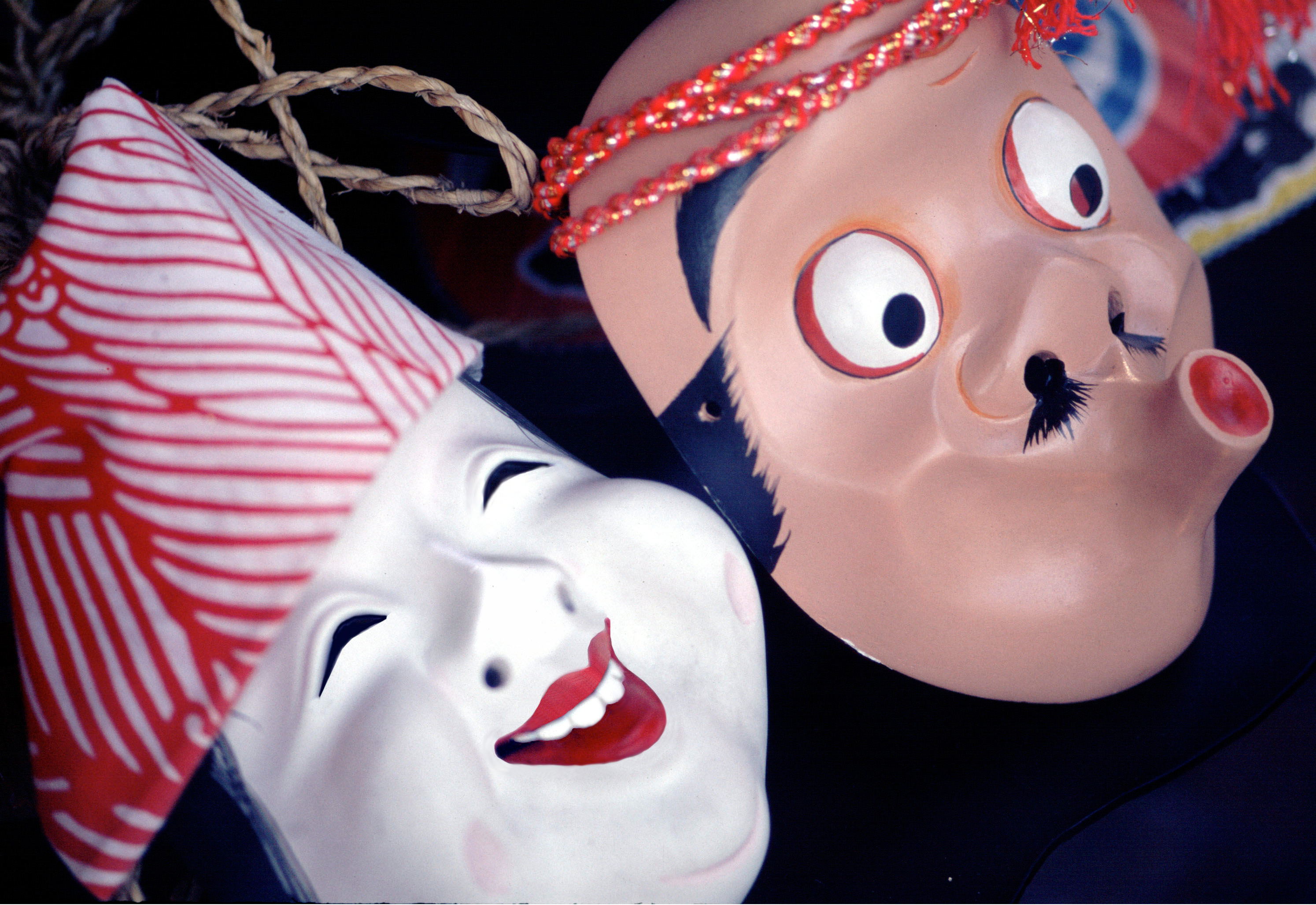Traditional Japanese Masks-History, Types and Meaning
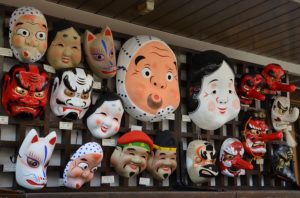
The Japanese people today are known to wear surgical masks in public for the protection of disease or for the feeling of privacy.
As well as a modern type of masks, traditional masks have been playing an important role in the Japanese society. Traditional Japanese masks are either archetypes borrowed from myths and gods or representing emotions, and they have been used in Shinto shrine festivals, rituals, and traditional drama called Noh.
Some of them are quite popular Japanese masks that you can still see today.
History of Japanese Masks
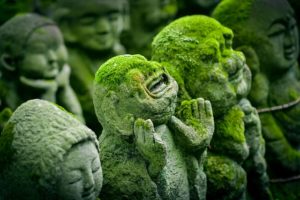
Masks were originally used in prehistoric religious rituals in Jomon period (10,000 B.C. to 300 B.C.), but after the introduction of Buddhism, masks came to be used for more secular purposes such as Shinto dances or playing roles on the stage. Noh dance, which is performed with wearing masks was originated in Muromachi period (1336-1573), and had an influence on subsequent traditions, including the face-painting of Kabuki.
9 Different Types of Traditional Japanese Masks
The followings are different types of traditional Japanese masks.
1. Mempo (Samurai Masks)

Mempo is known as samurai mask, used both to protect warriors’ faces and to give fearful impressions to enemies. Mempo were started to be worn in wars from the 16th century, and they were made by skillful craftsmen using iron and lacquered leather. Masks were decorated with details such as fake teeth. Their designs were customizable according to the wearers’ preferences.
2. Noh Masks
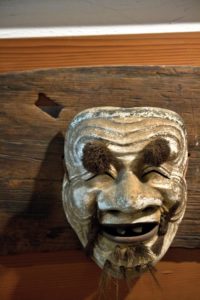
Noh is a type of traditional Japanese musical drama. Since all roles were played by male actors, female characters and old men characters were played with masks. Masks are still used in Noh theater today.
Noh masks have a complex design. They show different facial expressions depending on the angle from which they are viewed. They show sadness from one angle, but they also show anger from a different angle. Noh actors change directions of their bodies depending on which facial expression they should show.
3. Hyottoko Masks
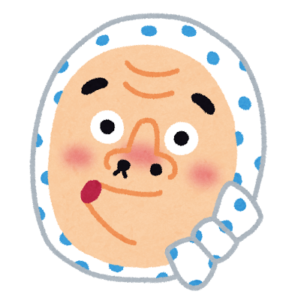
Hyottoko is a silly, childlike character in traditional Japanese performances with a funny facial expression on his face. His mouth is always rounded and skewed to one side. This feature was derived from a mask of Usobuki used in Kyogen (traditional Japanese comical drama), and the name Hyottoko was originated from Hiotoko, who blew fire with a bamboo pipe.
Dances with Hyottoko masks are played in some regions in Japan such as Miyazaki.
4. Okame Masks
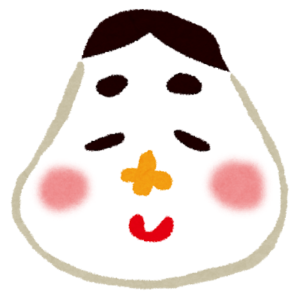
Okame masks, sometimes called Otafuku, demonstrate a female character with a round face, small nose, and small head design. They are often referred to a female version of Hyottoko, and both Okame and Hyottoko usually appear together. Also, Okame is known to bring a good fortune.
The origin of Okame masks is derived from the oldest female dancer Ameno-uzume appeared in the Japanese myth, and the name “Okame” is said to be rooted in the shape of kame (water jar).
5. Oni Masks
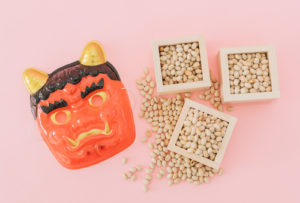
Oni is a demon, and their masks are depicted as frightening with long sharp teeth and horns. Masks are usually painted red, but painted other colors such as blue, yellow, green, or black. Each color indicates the calamity people want to overcome. Red is greed, blue is hatred, yellow is regret, green is disease, and black is grumbling.
Oni masks are commonly used in Setsubun, which is the day people expel a bad fortune and invite a good fortune by throwing beans. This event is held both at shrines and at each household. Parents wear masks to play Oni to frighten their children.
6. Hannya Masks
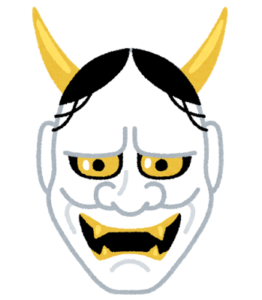
Hannya masks are used in Noh theater, representing female demons. They are portrayed as a female with much jealousy and hatred with long horns, sharp teeth, and distorted eyes.
Hannya masks at a glance seem to show anger and jealous, but at the same time, if seen from a certain angle, they seem to show sadness.
7. Kitsune Masks

Kitsune is fox. Kitsune masks are worn by participants or attendees in Shinto festivals. Foxes are historically believed to be magical creatures which can transform themselves. They are believed to appear as a messenger of Inari, or the God of rice, commerce, and prosperity. So foxes are an important figure in Shinto festivals involving the god. It is also said that the gods themselves show up as foxes.
8.Tengu Masks
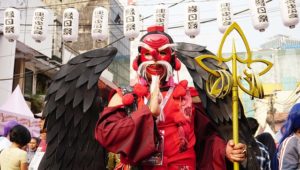
Tengu is a legendary creature known as the god or demons, which frightened humans due to its strong power to control the world. Historically it had a bird-like figure, but as time passed its figure turned into human-like, but the beak remained in the shape of a long nose.
Tengu is now believed to be a protector of mountains. Tengu masks are worn in many festivals and used to decorate shrines and temples because they are believed to keep them out from evil spirits and draw good luck.
9. Character Masks
Character masks are not traditional masks, but masks representing popular anime characters are sold at festivals and worn by kids. They are made of plastics and very cheap.
Which masks caught your attention?
I hope you enjoyed a variety of Japanese masks.
See you next time!
